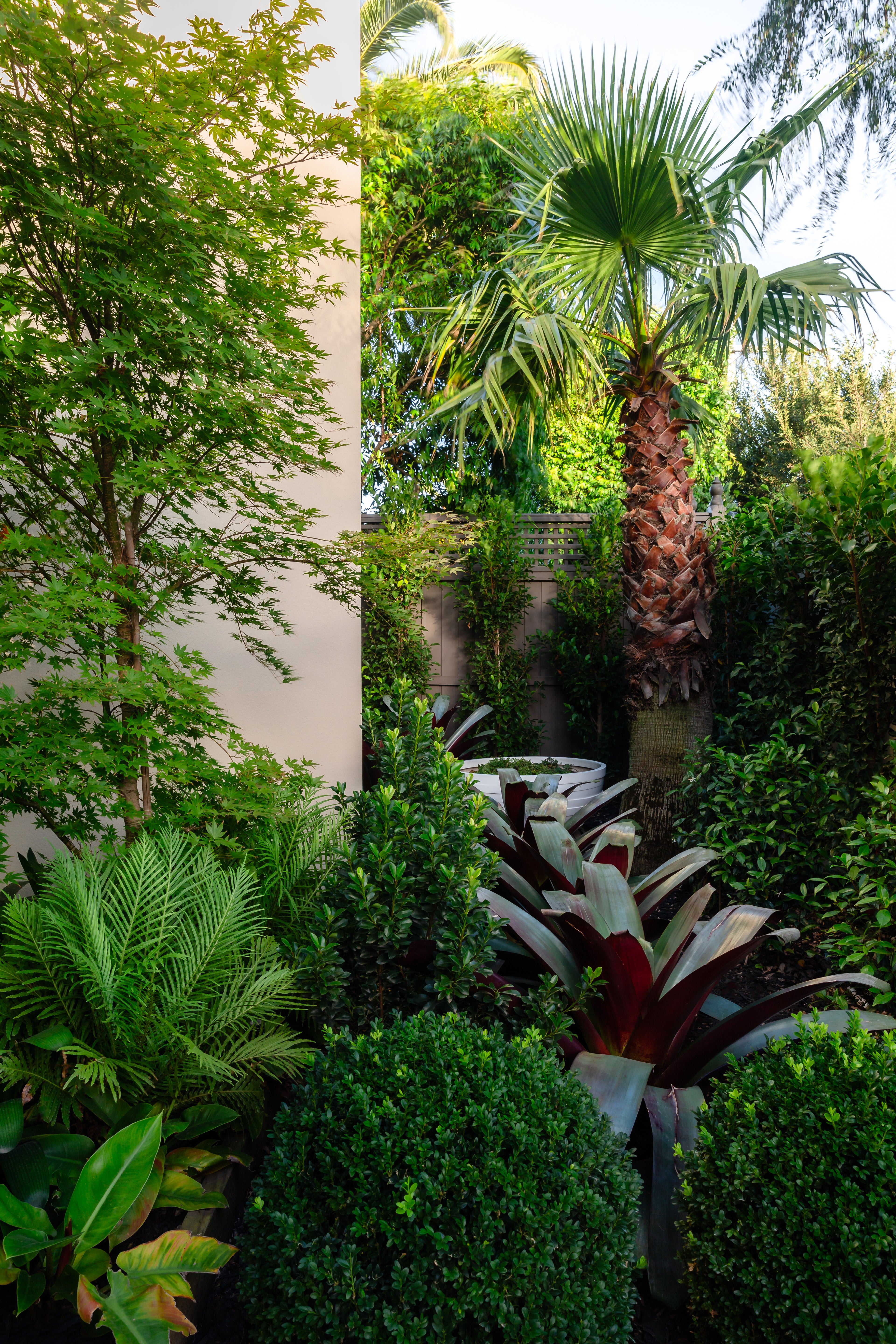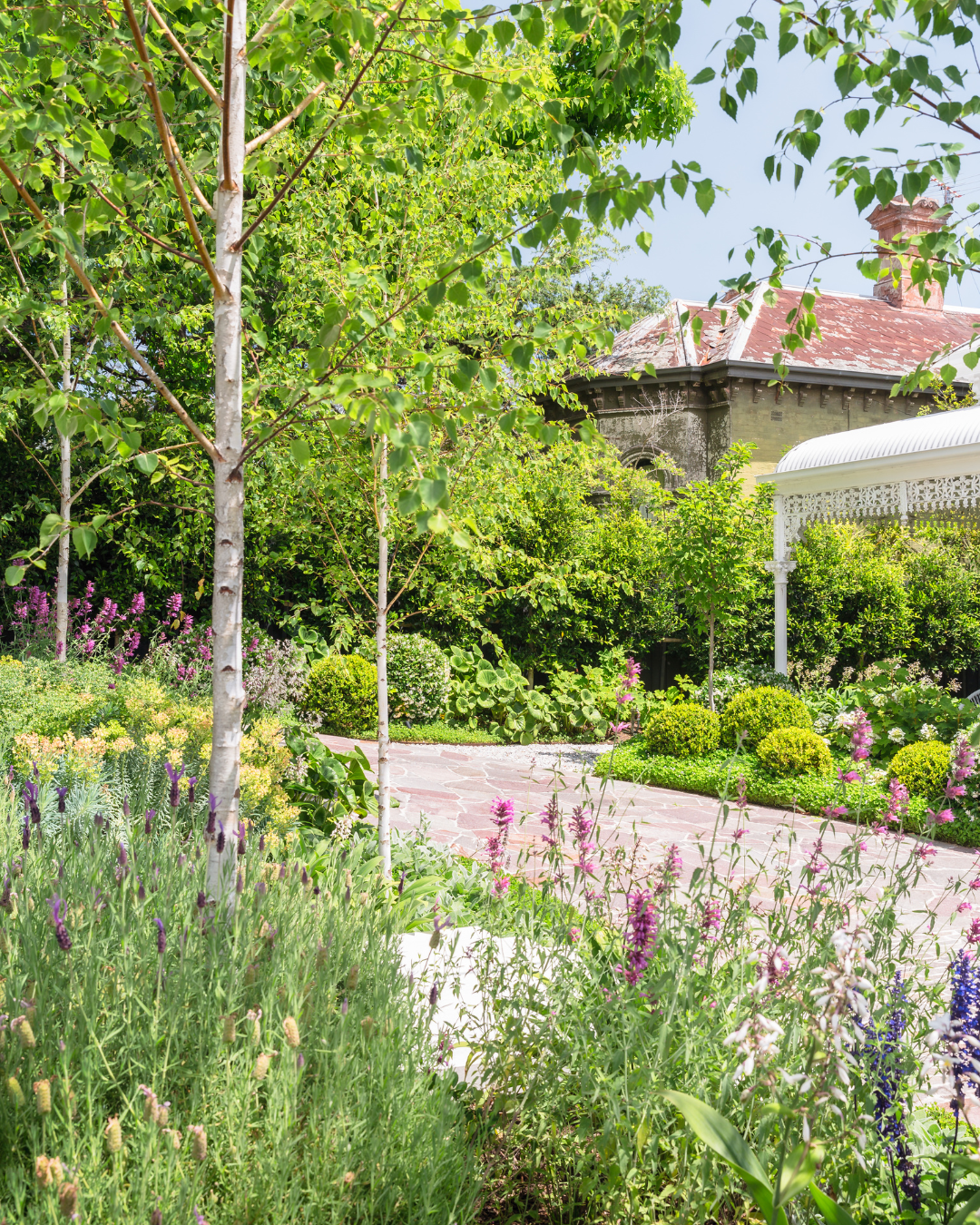Creating a lush, elegant garden doesn’t have to mean dedicating countless hours to maintenance. For those with busy lifestyles, choosing low-maintenance tree species can transform an outdoor space into a thriving, vibrant oasis without the hassle. We’ve selected three premium low-maintenance species: Acacia pycnantha, Lagerstroemia indica 'Natchez', and Ficus microcarpa 'Hillii Flash'. These trees are perfect for upscale gardens where quality and efficiency are valued. Discover what makes each of these species special and how they can elevate the appeal of your garden with minimal upkeep.
1. Acacia pycnantha (Golden Wattle)
Acacia pycnantha, commonly known as the Golden Wattle, is Australia's national floral emblem, known for its bright golden-yellow flowers and delicate foliage. This iconic tree not only adds a splash of vibrant color to gardens but is also highly drought-tolerant, making it suitable for regions with fluctuating rainfall. Its ability to thrive in less-than-ideal soil conditions and adapt to different climates makes it an ideal choice for low-maintenance landscaping. Whether planted as a focal point or grouped for a more dramatic effect, the Golden Wattle effortlessly enhances the landscape while requiring very little care.
Key Facts
- Mature Height: 4-8 meters
- Mature Width: 3-6 meters
- Best Uses: Feature tree, screening plant, adding seasonal color
- Leaf Appearance: Long, narrow, and bright green phyllodes
- Rate of Growth: Fast
- Tolerates: Drought, poor soil conditions, coastal environments
Why It’s Perfect to Add to Your Garden
The Golden Wattle is perfect for gardens that require year-round interest with minimal effort. Its vibrant yellow blooms appear in late winter to early spring, bringing a touch of brightness during the cooler months. Its fast growth rate allows it to fill spaces quickly, creating natural privacy screens or windbreaks. Moreover, the tree's hardy nature means it can endure the hot, dry conditions common in many regions, ensuring your garden remains stunning even during dry spells. Adding Acacia pycnantha to your landscape is a smart choice for those seeking a touch of native beauty without the constant upkeep.
2. Lagerstroemia indica 'Natchez' (Crepe Myrtle)
The Lagerstroemia indica 'Natchez', or Crepe Myrtle, is a striking tree known for its white, crepe-like flowers and elegant peeling bark. This variety stands out due to its extended blooming period, which spans from mid-summer to early autumn, providing consistent visual appeal. Its dark green leaves turn a beautiful bronze-red in autumn, adding seasonal diversity to your garden. With a moderate growth rate and a robust resistance to pests and diseases, the Natchez Crepe Myrtle is a favorite among those who desire a polished look without extensive maintenance.
Key Facts
- Mature Height: 6-8 meters
- Mature Width: 4-6 meters
- Best Uses: Feature tree, border planting, ornamental centerpiece
- Leaf Appearance: Dark green, transitioning to bronze-red in autumn
- Rate of Growth: Moderate
- Tolerates: Heat, humidity, light frost
Why It’s Perfect to Add to Your Garden
The Natchez Crepe Myrtle offers year-round elegance with minimal care for those who appreciate a refined look. Its extended flowering season brings a delicate beauty to gardens, while the distinctive bark texture adds interest even when the tree is not in bloom. Its tolerance for heat and humidity makes it suitable for a wide range of climates. At the same time, its moderate size ensures it fits perfectly in expansive landscapes and more compact garden settings. If you seek a tree that delivers beauty throughout the seasons without demanding much time or attention, the Lagerstroemia indica 'Natchez' is an exceptional choice.
3. Ficus microcarpa 'Hillii Flash' (Hill's Weeping Fig)
Ficus microcarpa 'Hillii Flash', commonly known as Hill's Weeping Fig, is popular for those looking to add lush greenery to their gardens. This versatile evergreen tree is well-suited for shaping as a topiary, growing as a hedge, or serving as a feature tree. Its glossy green foliage remains dense throughout the year, providing excellent coverage and a consistent look. Known for its rapid growth and ability to adapt to various conditions, the Hillii Flash is ideal for busy gardeners who want an impressive, low-maintenance solution for their outdoor space.
Key Facts
- Mature Height: 8-15 meters
- Mature Width: 6-10 meters
- Best Uses: Hedging, screening, formal topiary, feature tree
- Leaf Appearance: Glossy, dark green, small leaves
- Rate of Growth: Fast
- Tolerates: Pruning, poor soil, urban environments
Why It’s Perfect to Add to Your Garden
The Hill's Weeping Fig is a fantastic addition to any garden needing lush greenery that looks meticulously maintained without much effort. Its dense foliage is an excellent natural screen, ensuring privacy and reducing noise pollution. The tree’s adaptability makes it suitable for both formal gardens and contemporary landscapes. It thrives in urban settings, handling pruning well, and allowing customization to fit your garden's unique style. Ficus microcarpa 'Hillii Flash' combines visual appeal with versatility, ensuring your garden remains an elegant retreat.
The Appeal of Low-Maintenance Trees for High-End Gardens
Incorporating low-maintenance trees into your garden is not merely a practical choice—it’s an opportunity to achieve a sophisticated and polished landscape without constant upkeep. These trees offer resilience and beauty, allowing you to enjoy a vibrant outdoor space reflecting a well-designed garden's elegance.
Benefits of Low-Maintenance Trees:
- Time-saving: Busy homeowners can enjoy a stunning garden without devoting extensive time to care.
- Cost-effective: Low-maintenance trees require fewer watering, pruning, and pest management resources.
- Adaptability: These trees thrive in various conditions, from coastal regions to urban areas, making them suitable for diverse garden settings.
- Year-round appeal: Many low-maintenance trees, such as evergreen species, provide continuous beauty regardless of the season.
Tips for Choosing Low-Maintenance Trees
- Match the tree to your climate: Select species that naturally thrive in your local climate to reduce the need for special care.
- Opt for evergreens: Trees like Ficus microcarpa 'Hillii Flash' provide year-round greenery, reducing the need for seasonal replacements.
- Consider growth rate: Fast-growing trees such as the Golden Wattle can quickly fill out spaces and provide instant impact.
- Check soil preferences: Choose species that can tolerate the soil type in your area to ensure robust growth.
Conclusion
Enhancing your garden with low-maintenance trees like Acacia pycnantha, Lagerstroemia indica 'Natchez', and Ficus microcarpa 'Hillii Flash' allows you to enjoy an effortlessly beautiful landscape that aligns with your sophisticated lifestyle. These species combine minimal upkeep with maximum visual impact, making them ideal for busy gardeners who value quality and efficiency. By thoughtfully selecting trees well-suited to your environment, you can create a lush, inviting outdoor space that remains a source of pride throughout the year.
FAQs
-
Are low-maintenance trees suitable for small gardens?
Many low-maintenance trees, such as the Natchez Crepe Myrtle, have moderate mature sizes that fit well in small gardens while still providing visual interest. -
How often should low-maintenance trees be watered?
Once established, species like Acacia pycnantha typically require minimal watering. Watering needs may vary based on climate and soil conditions. -
Can these trees tolerate coastal environments?
Trees like the Golden Wattle are well-adapted to coastal conditions, handling salty air and sandy soil. -
Are these trees resistant to pests and diseases?
Low-maintenance trees often have natural resilience. For instance, Lagerstroemia indica 'Natchez' has a robust resistance to pests, reducing the need for chemical treatments.













